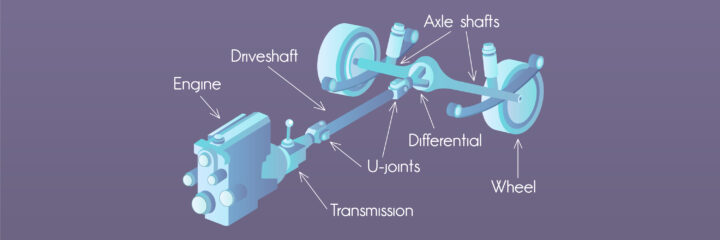A drive shaft is a crucial component of a vehicle’s drivetrain, responsible for transmitting power from the transmission to the wheels. When a drive shaft malfunctions, it can lead to reduced power, vibrations, or even loss of control over the vehicle. If you suspect a faulty drive shaft, it’s essential to have it inspected and repaired promptly to prevent further damage or potential accidents.

Image: www.youtube.com
Factors Influencing the Cost of Drive Shaft Repair
The cost of fixing a drive shaft can vary significantly depending on several factors:
- Type of Drive Shaft: Rear-wheel drive (RWD) vehicles typically have one-piece drive shafts, while all-wheel drive (AWD) and four-wheel drive (4WD) vehicles require two-piece drive shafts, resulting in a higher repair cost.
- Extent of Damage: The extent of damage to the drive shaft determines the complexity and cost of repair. Minor issues may only require replacing a u-joint or a section of the shaft, while major damage could necessitate complete replacement.
- Labor Hours: Labor costs for drive shaft repair can vary based on the mechanic’s skill level, hourly rate, and the location of the repair shop.
- Part Availability: The availability of replacement parts can also impact the cost of repair. Rare or discontinued parts may require custom fabrication or sourcing from specialized suppliers, increasing the overall cost.
Estimated Repair Costs
Based on these factors, here’s an estimated range of repair costs for drive shafts:
- Minor Repairs: Replacing a single u-joint or a small section of the shaft typically ranges from $250 to $600.
- Major Repairs: If the drive shaft is severely damaged and requires more extensive repairs or complete replacement, costs can range from $1,000 to $2,500 or more.
Identifying Drive Shaft Issues
Recognizing the symptoms of a potentially faulty drive shaft is crucial for prompt repair. Here are some common signs to look out for:
- Vibrations: Excessive vibrations felt through the steering wheel, floor, or seats when driving, especially at higher speeds, can indicate a drive shaft imbalance or damage.
- Noises: Clicking, clunking, or banging sounds while driving, particularly during acceleration or deceleration, could be a symptom of a problematic drive shaft.
- Reduced Power: Loss of power or acceleration issues, accompanied by vibrations or noises, may result from a damaged drive shaft that hinders power transfer.

Image: autoquarterly.com
Importance of Professional Repair
Attempting to repair a drive shaft yourself is not recommended unless you have extensive mechanical experience and proper tools. Incorrect repairs or improper handling can lead to more severe damage or compromise the drivetrain’s integrity and safety. Seeking the services of a qualified mechanic is paramount for proper diagnosis and repairs.
How Much Is It To Fix A Drive Shaft
https://youtube.com/watch?v=StN0w1MM5fw
Conclusion
Maintaining a properly functioning drive shaft is essential for a safe and reliable driving experience. Recognizing the potential signs of a faulty drive shaft and addressing repairs promptly is crucial. While the cost of repair can vary depending on the factors discussed, investing in timely and professional repairs can prevent further issues and ensure your vehicle’s optimal performance.